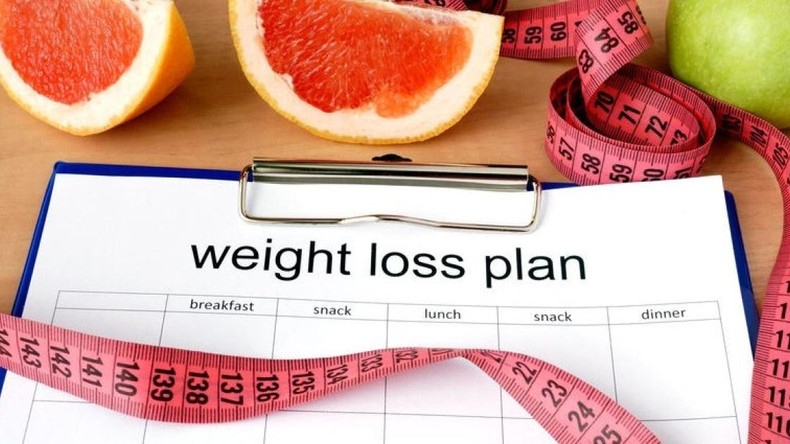The Science Behind Weight Loss: How Your Body Burns Fat
Are you on a weight loss journey and curious about how your body sheds those extra pounds? Well, you're in the right place! In this blog post, we'll break down the science of weight loss into simple, digestible nuggets. We'll explore how your body burns fat, delve into the intricacies of metabolism, and uncover the secrets behind creating a calorie deficit for effective weight loss.
Action Step 1: Set Clear Goals Before diving into your weight loss journey, define your goals. Do you want to lose a specific amount of weight, improve your overall health, or increase your fitness level? Having clear objectives will help you stay motivated. SkinnyJane.com's Weight Loss Plans come with a Goal Setting Card and easy and effective instructions.
The Basics of Fat Burning:
- To lose weight, you need to burn more calories than you consume. This is known as a calorie deficit.
- Your body primarily uses two sources of energy: carbohydrates and fat.
- When you consume fewer calories than your body needs, it turns to stored fat for energy.
Action Step 2: Calculate Your Calorie Needs Determine your Basal Metabolic Rate (BMR) and daily calorie requirements. There are online calculators that can help with this. Understanding your calorie needs is crucial for creating an effective weight loss plan.
How Does the Body Burn Fat?
- Your body breaks down fat molecules into glycerol and fatty acids through a process called lipolysis.
- These components enter your bloodstream and are transported to your cells, where they're converted into energy.
Action Step 3: Build Healthy Habits Incorporate small, sustainable changes into your daily routine. Focus on making better food choices, eating healthy snacks, and increasing physical activity gradually. These habits will form the foundation of your weight loss journey.
Understanding Metabolism for Weight Loss: Metabolism refers to all the chemical reactions in your body that keep you alive. Your Basal Metabolic Rate (BMR) is the number of calories your body needs to perform basic functions at rest. Increasing your BMR through muscle-building exercises can help you burn more calories. High-intensity workouts can boost your metabolism even further, leading to increased calorie burn.
Action Step 4: Create a Balanced Meal Plan Design a well-rounded meal plan that includes a variety of nutrient-rich foods. Aim for a balanced mix of carbohydrates, proteins, and healthy fats. Consider getting a plan that allows you to use everyday foods you can get at your local grocery store.
Creating a Calorie Deficit for Weight Loss: To lose one pound of fat, you need to create a calorie deficit of approximately 3,500 calories. You can achieve this by eating fewer calories, increasing physical activity, or a combination of both. Aim for a gradual, sustainable deficit of 500 to 1,000 calories per day for safe and effective weight loss. Keep in mind that losing weight too quickly can be detrimental to your health.
Action Step 5: Having a Plan and Staying Consistent is Key to successful weight loss, and seeking support can help you on your journey. Track your progress, stay accountable, and seek support from friends, family, or a weight loss community. Remember that setbacks are normal, and it's important to stay motivated and keep moving forward. SkinnyJane.com's Weight Loss Plans give you a easy, yet effective plan to follow.
The Role of Nutrition: Eating a balanced diet with the right mix of macronutrients (carbohydrates, proteins, and fats) is crucial. Incorporate whole foods, fruits, vegetables, lean proteins, and healthy fats into your diet. Make sure you get enough protein everyday, and we recommend starting your day with a delicous protein smoothie such as Skinny Blend. Avoid highly processed and sugary foods, as they can lead to excess calorie consumption. Stay hydrated, as proper hydration is essential for all metabolic processes.
Key Takeaways:
- Weight loss is a science, and understanding how your body burns fat is essential for success.
- Focus on creating a sustainable calorie deficit through diet and exercise.
- Prioritize a balanced, nutritious diet to support your weight loss goals.
- Remember that everyone's body is different, so what works for one person may not work for another.
The science behind weight loss boils down to the simple concept of burning more calories than you consume. By understanding how your body burns fat, the role of metabolism, and the importance of creating a calorie deficit, you can embark on a successful weight loss journey. Remember that patience and consistency are key, and consult with a healthcare professional or registered dietitian for personalized guidance on your weight loss goals.


